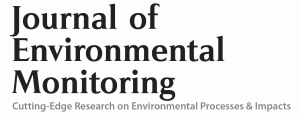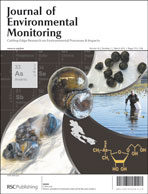 On the outside front cover of JEM Issue 3 is a HOT article from William Cullen et al. reporting on the arsenic speciation in freshwater snails from Pender Island and Vancouver Island in Canada. Little is currently known about arsenic speciation and its life cycle variation in freshwater snails, which are an important food source for many creatures including fish and birds, and are occasionally consumed by humans.
On the outside front cover of JEM Issue 3 is a HOT article from William Cullen et al. reporting on the arsenic speciation in freshwater snails from Pender Island and Vancouver Island in Canada. Little is currently known about arsenic speciation and its life cycle variation in freshwater snails, which are an important food source for many creatures including fish and birds, and are occasionally consumed by humans.
Arsenic speciation in freshwater snails and its life cycle variation
Vivian W.-M. Lai, Katerina Kanaki, Spiros A. Pergantis, William R. Cullen and Kenneth J. Reimer
DOI: 10.1039/C2EM10764C
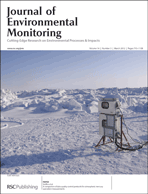 On the inside front cover is a HOT article from Alexandra Steffen and colleagues from Environment Canada and the National Atmospheric Deposition Program (NADP) at the University of Illinois, reporting on a comparison of their data quality control protocols for the measurement of atmospheric mercury species. The protocols RDMQ™ and AMQC were developed independently by Environment Canada and the NADP respectively, and have been assessed by the criteria on which the data is quality controlled and comparability of the final data products.
On the inside front cover is a HOT article from Alexandra Steffen and colleagues from Environment Canada and the National Atmospheric Deposition Program (NADP) at the University of Illinois, reporting on a comparison of their data quality control protocols for the measurement of atmospheric mercury species. The protocols RDMQ™ and AMQC were developed independently by Environment Canada and the NADP respectively, and have been assessed by the criteria on which the data is quality controlled and comparability of the final data products.
A comparison of data quality control protocols for atmospheric mercury speciation measurements
Alexandra Steffen, Tina Scherz, Mark Olson, David Gay and Pierrette Blanchard
DOI: 10.1039/C2EM10735J
This issue also features the following HOT articles:
Exposure assessment of tetrafluoroethylene and ammonium perfluorooctanoate 1951–2002
Anne Sleeuwenhoek and John W. Cherrie
DOI: 10.1039/C2EM10930A
Comparison of DNA extraction methodologies used for assessing fungal diversity via ITS sequencing
William R. Rittenour , Ju-Hyeong Park , Jean M. Cox-Ganser , Donald H. Beezhold and Brett J. Green
DOI: 10.1039/C2EM10779A
Read the rest of Issue 3 here
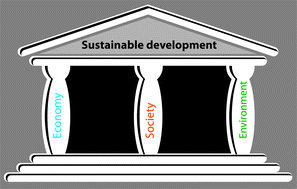











 On the outside front cover of JEM
On the outside front cover of JEM  On the inside front cover is a HOT article from Alexandra Steffen and colleagues from Environment Canada and the National Atmospheric Deposition Program (NADP) at the University of Illinois, reporting on a comparison of their data quality control protocols for the measurement of atmospheric mercury species. The protocols RDMQ™ and AMQC were developed independently by Environment Canada and the NADP respectively, and have been assessed by the criteria on which the data is quality controlled and comparability of the final data products.
On the inside front cover is a HOT article from Alexandra Steffen and colleagues from Environment Canada and the National Atmospheric Deposition Program (NADP) at the University of Illinois, reporting on a comparison of their data quality control protocols for the measurement of atmospheric mercury species. The protocols RDMQ™ and AMQC were developed independently by Environment Canada and the NADP respectively, and have been assessed by the criteria on which the data is quality controlled and comparability of the final data products. The release of engineered nanomaterials to the environment
The release of engineered nanomaterials to the environment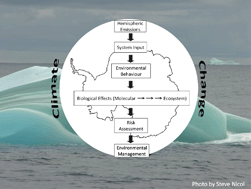 Persistent organic pollutants in Antarctica: current and future research priorities
Persistent organic pollutants in Antarctica: current and future research priorities 
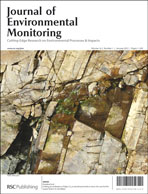 In 2012 we welcome a new Chair to our Editorial Board, Frank Wania, University of Toronto and thank Professor Deborah Swackhamer for all her work as previous Chair.
In 2012 we welcome a new Chair to our Editorial Board, Frank Wania, University of Toronto and thank Professor Deborah Swackhamer for all her work as previous Chair. 

